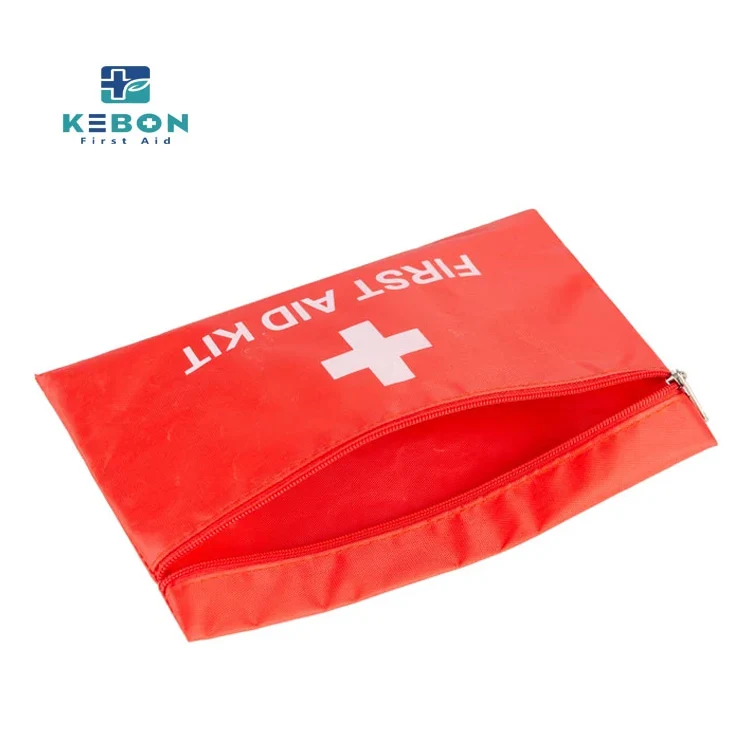How to Use the Items in a Pet First Aid Kit
2025-06-23
A pet first aid kit is an essential tool for any pet owner, as it can make the difference between life and death during emergencies. Just like human first aid kits, these kits contain various items designed to treat minor injuries or provide temporary relief until professional veterinary care is available. Knowing how to properly use each item in your pet’s first aid kit can significantly improve your pet's chances of recovery in an emergency. Here’s a guide on how to use the items in a pet first aid kit:
1. Thermometer
A thermometer is used to measure your pet’s body temperature. It is crucial to monitor temperature fluctuations, as a sudden spike (fever) or drop (hypothermia) can indicate serious health issues.
How to use: Gently insert the thermometer into the pet’s rectum for a more accurate reading. For some pets, a digital thermometer may be more comfortable than a traditional mercury thermometer. The average temperature for a dog or cat is between 101°F and 102.5°F (38.3°C and 39.2°C).
2. Gauze Pads and Bandages
Gauze pads and bandages are typically used to control bleeding and cover wounds. If your pet is injured, it’s important to clean and dress the wound to prevent infection.
How to use: First, clean the wound with a mild antiseptic solution (avoid using hydrogen peroxide as it can damage tissue). Apply a sterile gauze pad over the wound to absorb any blood or discharge. Then, wrap a bandage around the area to secure the gauze in place. If bleeding doesn’t stop after a few minutes, apply more pressure or use a tourniquet if necessary (for severe bleeding, apply a tourniquet above the injury).
3. Adhesive Tape
Adhesive tape is used to secure bandages or gauze pads to your pet’s skin. It’s gentle on fur but can hold bandages in place.
How to use: Carefully wrap the tape around the bandaged area, being careful not to make it too tight. You don’t want to restrict circulation, so ensure that it’s snug but not constrictive. Make sure the edges of the tape do not pull on the fur, as this can cause discomfort.

4. Antiseptic Wipes
Antiseptic wipes are used to clean wounds, cuts, or scrapes before bandaging. They help remove dirt and prevent infections.
How to use: Gently wipe the wound to remove any dirt, debris, or bacteria. Use only non-alcohol-based wipes, as alcohol can cause stinging and irritation to pets. After cleaning, apply a gauze pad to the wound and proceed with bandaging.
5. Tweezers
Tweezers are vital for removing splinters, ticks, or thorns that may get stuck in your pet’s skin.
How to use: Grasp the object (tick, splinter, etc.) with the tweezers as close to the skin as possible, and gently pull it out. Be careful not to pinch the skin or leave parts of the object behind. For ticks, make sure to pull it out with steady pressure without twisting to avoid breaking the tick’s body.
6. Elastic Bandage (Vet Wrap)
An elastic bandage, also known as Vet Wrap, is used to cover wounds or stabilize injuries, especially sprains or fractures.
How to use: Wrap the elastic bandage around the injured area to stabilize it. Make sure it’s snug, but not tight enough to impair circulation. Vet Wrap is self-adhesive, so it sticks to itself without the need for additional tape. For a sprain, make sure to support the joint above and below the injury site.
7. Hydrocortisone Cream or Spray
This item is used to treat minor skin irritations, rashes, or insect bites. It helps reduce itching and inflammation.
How to use: Apply a thin layer of hydrocortisone cream or spray to the affected area. Avoid using this on large areas of the body or deep wounds, as it may not be safe for extended use.
8. Eye Wash or Saline Solution
Saline solution or an eye wash is used to flush debris or irritants from the eyes.
How to use: Gently flush the eye with the saline solution by pouring it into the corner of the eye, letting it drain out. Avoid direct contact with the eye, but ensure that the solution is gently applied. This can help remove irritants like dust, dirt, or chemicals.
9. Splints
A splint is used to stabilize fractures and prevent further injury. It is important to immobilize the affected area until professional veterinary care can be reached.
How to use: Place the splint along the injured limb, and use tape or bandages to secure it. Ensure that the splint is snug but not too tight, as it could cut off circulation. It’s essential to keep the splint in place until your pet receives medical attention.
10. Scissors
Scissors in a pet first aid kit are used for trimming fur around wounds, removing stuck materials (like tape or bandages), or cutting the bandages to the desired length.
How to use: Gently trim fur around the wound to provide better access and ensure the bandage sticks. Be careful to avoid cutting the skin. If you need to remove old bandages, carefully cut them off rather than pulling them, which could cause pain or injury.
11. Muzzle
In case of emergency, pets may react aggressively due to fear or pain. A muzzle can prevent them from biting or injuring themselves or others.
How to use: Gently place the muzzle over the pet’s nose and secure it. Do not leave the muzzle on for extended periods, and avoid using it if the pet has difficulty breathing or is in distress. The goal is to ensure safety without causing harm or excessive stress.
12. Disposable Gloves
Disposable gloves are necessary for handling wounds or any bodily fluids to maintain hygiene and avoid contamination.
How to use: Put on gloves before touching any injury or wound to protect yourself and your pet from possible infections. Change gloves between handling different wounds or fluids.
13. Pet First Aid Manual
A well-organized manual can help guide you through various emergency procedures. It’s vital to have this in your kit, as it provides detailed instructions on how to handle specific situations.
How to use: In case of an emergency, refer to the manual for step-by-step instructions on what to do next. It can be a great resource for recognizing symptoms and assessing the severity of an injury.
14. Portable Water and Food
In some emergencies, especially when traveling, you may need to keep your pet hydrated and fed until help arrives.
How to use: Offer water and small amounts of food if your pet is conscious and able to eat. Be sure not to overfeed or force-feed, especially in cases of trauma.
Conclusion
A pet first aid kit is a lifesaver in emergencies, but knowing how to use the items inside it is just as crucial as having it on hand. Whether it’s cleaning a wound, stabilizing an injury, or preventing infection, understanding the proper use of each tool can help your pet stay safe and comfortable during a medical crisis. Regularly check the kit to ensure it’s stocked with the necessary items, and consider taking a pet first aid class to gain additional knowledge and confidence in handling emergencies.
As a professional manufacturer and supplier, we provide high-quality products. If you are interested in our products or have any questions, please feel free to contact us.


